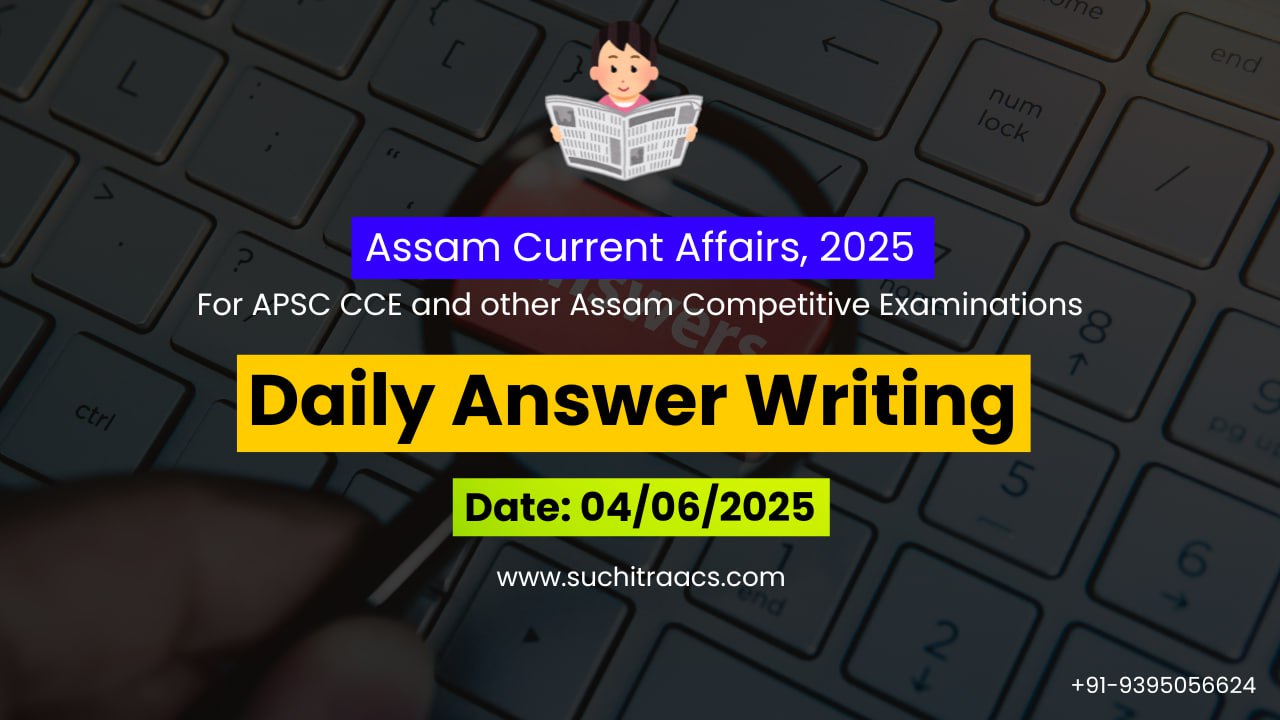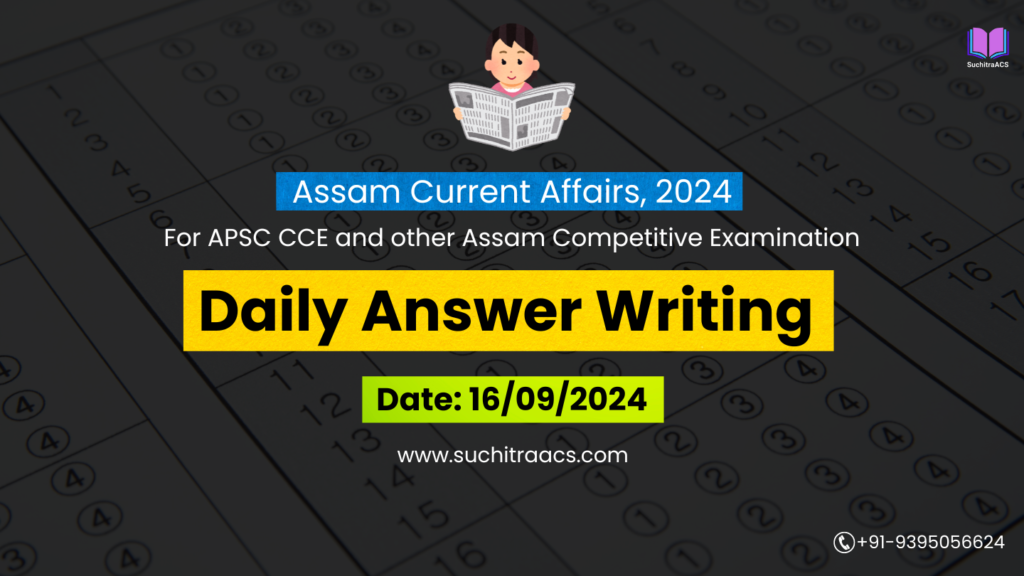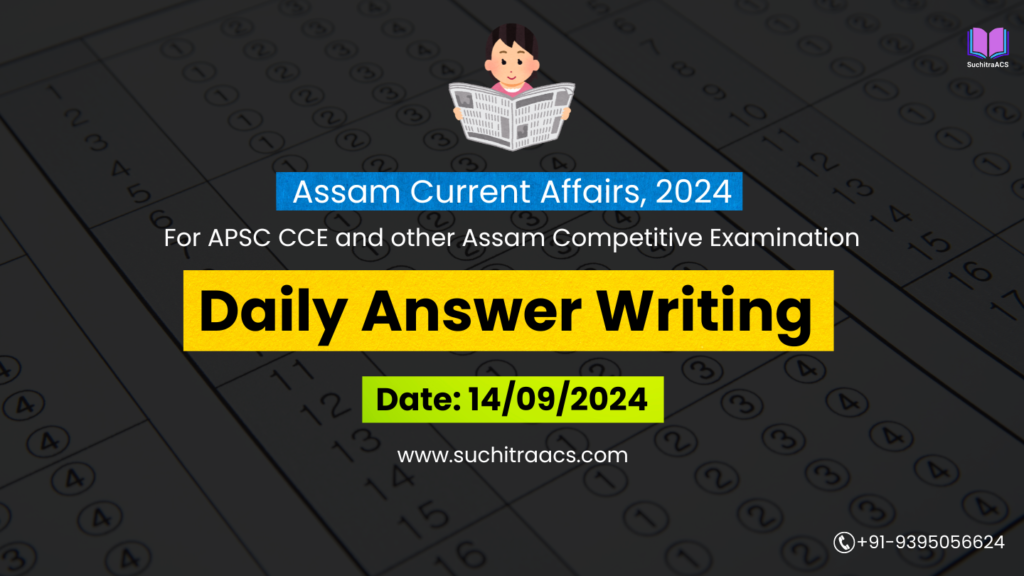APSC Answer Writing (Daily) based on Assam Tribune – 04/06/2025
For APSC CCE and other Assam Competitive examinations aspirants, practicing Daily Answer Writing is vital. This blog covers the most important Main question and its model Answer from the Assam Tribune today (04-06-2025).
📝 Mains Question (GS Paper 3 – Environment | Geography | Disaster Management):
Q. With Assam expected to face a fifth consecutive year of below-normal monsoon, examine the implications of monsoon variability on the state’s agriculture, water security, and disaster management. Suggest a climate-resilient roadmap for Assam in this context.
📘 Model Answer
Introduction
The India Meteorological Department (IMD) has forecast below-normal monsoon for Assam in 2025—marking the fifth consecutive deficit year for the Assam-Meghalaya subdivision. While Assam is traditionally flood-prone due to the Brahmaputra basin’s hydrology, it is now increasingly facing erratic rainfall, marked by intense pre-monsoon flooding followed by monsoon shortfall. This monsoon variability challenges the region’s agricultural stability, water planning, and disaster resilience.
Implications of Monsoon Variability in Assam
A. Agricultural Stress
- 70% of Assam’s agriculture is rain-fed, especially sali paddy and pulses.
- Irregular rainfall delays sowing and transplantation, reducing yields.
- Tea plantations in upper Assam face moisture stress, impacting quality and exports.
B. Water Security Threat
- Inconsistent rainfall leads to insufficient groundwater recharge, especially in Barak Valley and hill districts.
- Overdependence on rivers like Brahmaputra and its tributaries, which are now behaving unpredictably.
- Drinking water schemes and minor irrigation projects suffer operational delays.
C. Disaster Management Complexity
- Monsoon anomalies have resulted in a paradox—pre-monsoon floods (May) and monsoon droughts (June–Sept).
- Early floods damage sowing cycles, while late monsoons delay harvests.
- ASDMA’s seasonal preparedness protocols become ineffective due to shifting patterns.
Factors Contributing to Monsoon Anomalies
| Climatic Factor | Effect on Assam |
| Pacific Decadal Oscillation (PDO) | Long-term ocean cycle; current negative phase linked to low rainfall |
| El Niño Events | Weakens monsoon wind; frequent El Niño years observed recently |
| Deforestation & Land Use Change | Affects local rainfall and increases surface runoff |
| Climate Change | Intensifies weather extremes—frequent cloudbursts and dry spells |
Roadmap for Climate-Resilient Assam
1. Agricultural Adaptation
- Promote climate-resilient crop varieties (e.g., Ranjit Sub-1 for flood tolerance, Bahadur for drought).
- Encourage System of Rice Intensification (SRI) and crop diversification (e.g., from paddy to millets or oilseeds).
- Set up weather-linked crop insurance under PMFBY with village-level customization.
2. Water Resource Management
- Expand micro-irrigation coverage under PMKSY in rain-deficit districts.
- Revive traditional water-harvesting systems in Bodo, Mishing, and Karbi areas.
- Create real-time groundwater monitoring networks with IMD and CGWB collaboration.
3. Disaster Risk Planning
- Shift from reactive flood relief to anticipatory risk management using seasonal climate forecasts.
- Incorporate flash droughts and short dry spells into ASDMA’s response matrix.
- Create a Monsoon Resilience Cell under the Disaster Management Department with AI/ML-based forecasting.
4. Institutional and Community Engagement
- Establish climate field schools in collaboration with Krishi Vigyan Kendras (KVKs).
- Involve local tribal councils and panchayats in village-level vulnerability mapping.
- Integrate climate literacy into school curriculum under NEP 2020.
Relevant Policies & Reports
- State Action Plan on Climate Change (SAPCC) – Assam
- IPCC AR6 Report – identifies Northeast India as a monsoon-sensitive hotspot
- National Rainfed Area Authority (NRAA) – guidelines on managing climate variability
- IMD Second Long-Range Forecast (June 2025) – predicted monsoon deficit in Assam-Meghalaya
Conclusion
Monsoon variability in Assam is no longer a statistical anomaly—it is a climatic reality. It threatens not only food and water security but also erodes the state’s disaster preparedness architecture. Assam must adopt a climate-resilient development model, one that blends traditional wisdom with modern science, ensures inclusive policy frameworks, and strengthens the adaptive capacity of its people.
✨ Looking for top-quality APSC Mains Guidance with Personalised Mentor?

🔔 Join Our WhatsApp Study Group!
For exclusive access to premium quality content, including study materials, current affairs, MCQs, and model answers for APSC CCE and other Assam competitive exams.
Click here to join: SuchitraACS Study WhatsApp Group
📚 Want to know more about SuchitraACS’s most affordable courses?
Click here to know more: SuchitraACS Courses for APSC CCE and Assam Competitive Examinations



